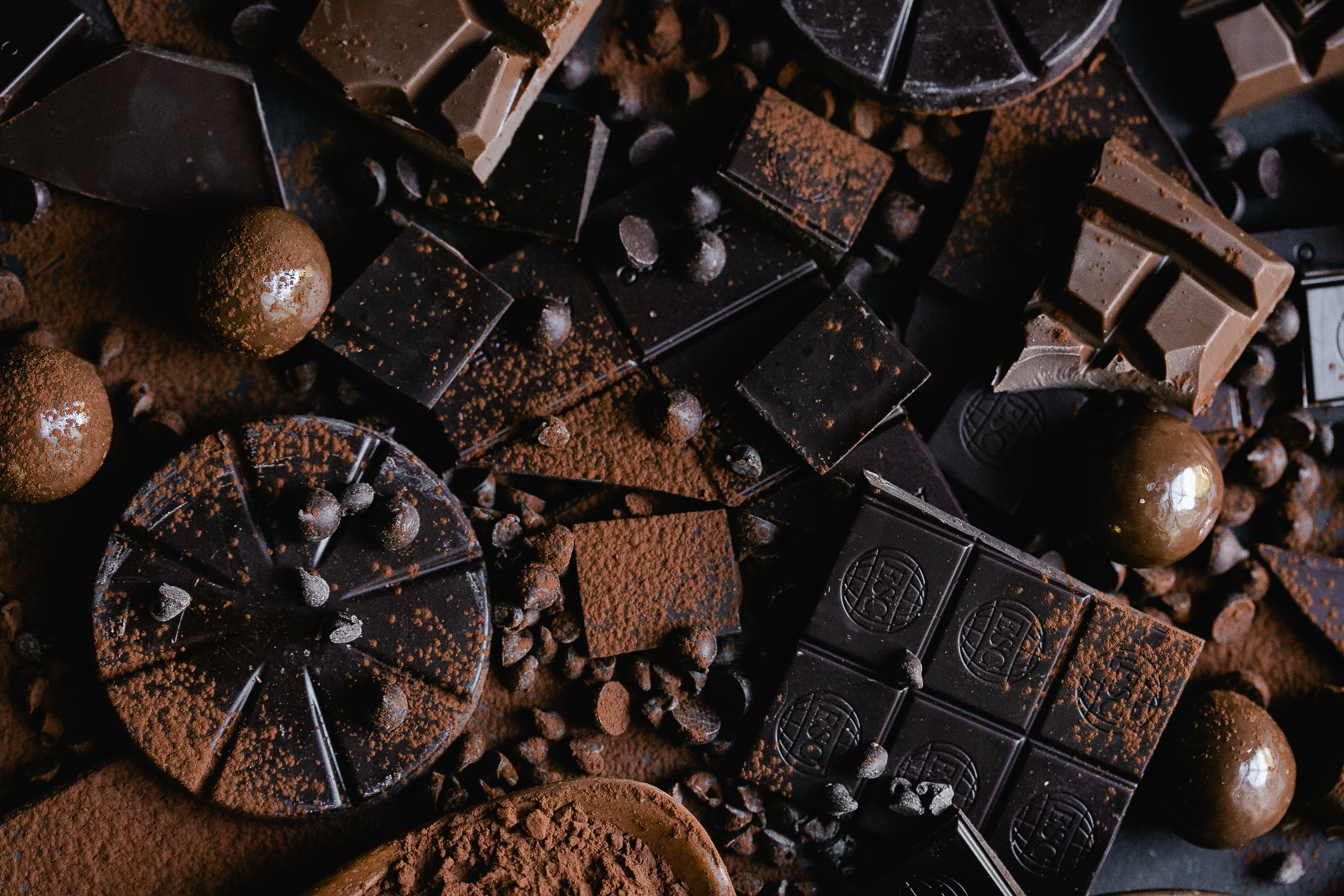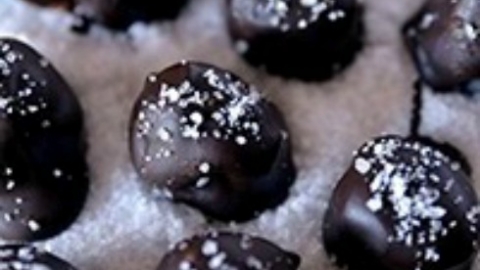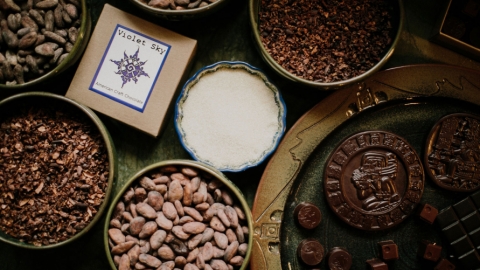In-season: Chocolate
Chocolate, luxurious in flavor and texture, has been prized for centuries, sometimes at great cost. Evidence of cocoa consumption dates to 1900 B.C. in Mesoamerica. A focal point of Indigenous culture, it was even used as currency. Once the Spanish colonization of the Americas began, cocoa made its way into the hearts of elite Europeans. As the desire for chocolate intensified, so did the slave market. Inhumane working conditions and child labor continue today. Fortunately, fair trade chocolate is readily available at most supermarkets, and local makers like Violet Sky Chocolate in South Bend, Indiana, are creating artisanal chocolate using direct trading practices.
Once a cacao pod is harvested from a cacao tree, the cacao beans are extracted from the pods, fermented to develop flavor, dried, roasted and shelled. The resulting cocoa nibs are ground into a paste and processed in different ways. It’s important to note that “cacao” often refers to fermented beans that have not been roasted. Cacao nibs and powder retain more nutritional value but are much more bitter than cocoa beans and powder. The average cacao bean is made of equal parts cocoa butter and cocoa solids; a special press can be used to separate the two. The extracted cocoa solids are ground into a fine powder to make natural cocoa powder. Alternatively, cocoa beans can be bathed in an alkaline solution before being ground, which neutralizes their acidity. This is known as Dutch-process cocoa powder.
Ground cocoa paste is heated and additional cocoa butter, sugar, milk, vanilla and other flavorings are added in varying quantities, resulting in bittersweet chocolate, semi-sweet chocolate and milk chocolate, among others. White chocolate is created by using the extracted cocoa butter along with milk solids, sugar and sometimes vanilla. Since it doesn’t contain any cocoa solids, some believe it shouldn’t be considered chocolate.
Selecting: Natural cocoa powder is bitter and acidic, with a highly concentrated chocolate flavor. Select it when a recipe calls for baking soda, as the acidity of the powder is crucial for a good rise. Dutch-process cocoa powder is darker in color, milder in flavor and should not be used in recipes that call for baking soda. These two cocoa powders are interchangeable for recipes that don’t call for a leavening agent.
Bittersweet chocolate, semi-sweet chocolate and milk chocolate can be used interchangeably based on the level of intensity and sweetness you’d prefer. You’ll find them in bar or chip form. Chips have added stabilizers to help them keep their shape when baked, so keep that in mind when you want your chocolate to melt easily. Unsweetened chocolate, also known as “baking chocolate,” melts quickly, has no added sugar or flavors, and is intended for baking only. It’s not a good choice for eating straight out of the pantry.
Storing:
Chocolate easily absorbs odors, so it’s best to store it in an airtight container in a cool, dark, dry place. If properly stored, darker chocolates will keep for close to 2 years, while milk chocolate will keep for 1 year. Unopened cocoa powder has an even longer shelf life, at around 2 to 3 years, although the flavor might weaken over time. Opened cocoa powder should be consumed within a year. Avoid storing chocolate in the refrigerator or freezer because the humidity and moisture can affect the appearance and the chocolate is more likely to absorb unpleasant odors.
Pairing:
Alliums, allspice, apples, avocados, basil, beans, beef, beer, beets, berries, butter, cardamom, carrots, celery, cheese, chicken, chilis, cilantro, cinnamon, cloves, coconut, coffee, corn, cumin, eggs, fennel, fish, ginger, grapefruit, honey, lemon, lime, liquor, mango, matcha, milk, mint, mushrooms, mustard, nuts, olives, orange, oregano, peppers, pineapple, pork, potatoes, rice, rosemary, sage, salt, sesame, spinach, squash, sugar, sweet potatoes, tea, thyme, tomatillos, tomatoes, turkey, vanilla, wheat, wine.
Ashley Swartzendruber is Edible Michiana’s recipe editor, stylist and photographer based in Goshen, Indiana. She can be found cooking, eating and photographing local food in her home or exploring Michiana with her family. You can find more of her photos, styling and motherhood musings on her Instagram @mywildhaven.







